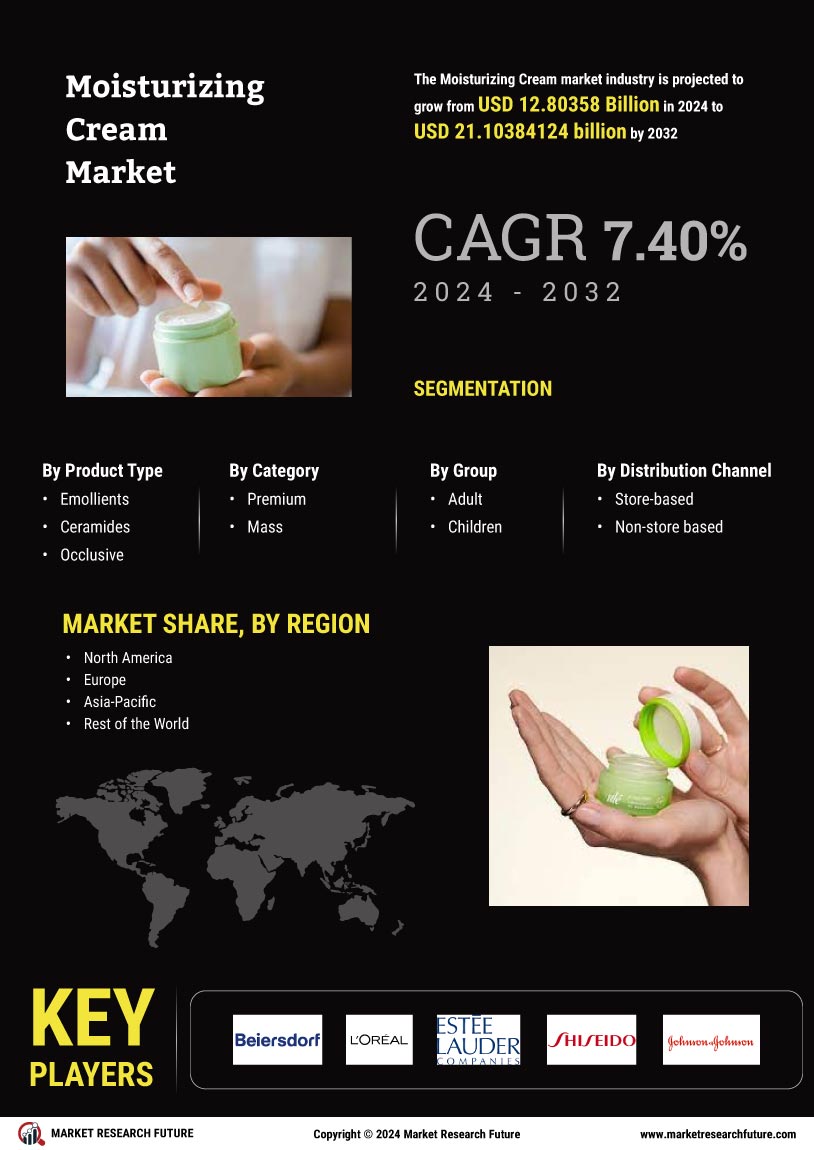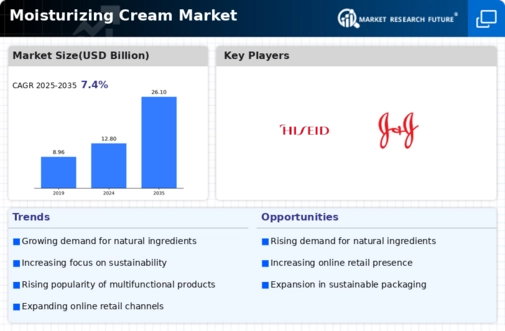Market Growth Projections
The Global Moisturizing Cream Industry is projected to experience substantial growth over the coming years. With an anticipated market value of 12.8 USD Billion in 2024, the industry is set to expand significantly, reaching 26.1 USD Billion by 2035. This growth trajectory suggests a robust demand for moisturizing creams, driven by various factors including consumer preferences for natural ingredients, the rise of e-commerce, and increased awareness of skincare. The projected CAGR of 6.71% from 2025 to 2035 indicates a healthy market environment, positioning the industry favorably for future developments.
Growth of E-commerce Platforms
The Global Moisturizing Cream Industry is significantly influenced by the expansion of e-commerce platforms. Online retailing offers consumers convenience and access to a wider range of products, including niche and premium brands that may not be available in physical stores. This shift towards digital shopping is particularly appealing to younger demographics, who prefer the ease of online purchasing. As e-commerce continues to grow, it is anticipated that the market will benefit from increased sales and brand visibility. By 2035, the industry is projected to reach 26.1 USD Billion, driven in part by the robust growth of online sales channels.
Innovations in Product Formulations
The Global Moisturizing Cream Industry is witnessing a surge in innovations related to product formulations. Brands are increasingly investing in research and development to create advanced moisturizing creams that cater to specific skin types and concerns. For instance, formulations that incorporate hyaluronic acid, peptides, and other active ingredients are becoming more prevalent. These innovations not only enhance the efficacy of moisturizing creams but also attract consumers looking for targeted solutions. As a result, the market is likely to see sustained growth, with the potential for new entrants to disrupt traditional offerings and capture market share.
Rising Demand for Natural Ingredients
The Global Moisturizing Cream Industry experiences a notable shift towards products containing natural and organic ingredients. Consumers increasingly seek formulations free from synthetic chemicals, which aligns with a broader trend of health-consciousness. This demand is driven by heightened awareness of skin health and the potential adverse effects of artificial additives. As a result, brands are reformulating their products to include botanical extracts and essential oils. This trend is expected to contribute to the market's growth, with projections indicating that the industry could reach 12.8 USD Billion in 2024, reflecting a significant consumer preference for natural skincare solutions.
Demographic Shifts and Aging Population
The Global Moisturizing Cream Industry is significantly influenced by demographic shifts, particularly the aging population. As individuals age, their skin tends to lose moisture and elasticity, leading to increased demand for effective moisturizing solutions. This trend is particularly relevant in developed countries, where the proportion of older adults is rising. Brands are responding by developing products specifically designed for mature skin, which often require more intensive hydration. This demographic shift is expected to contribute to the overall growth of the market, as the industry adapts to meet the needs of an aging consumer base.
Increased Awareness of Skincare Regimens
The Global Moisturizing Cream Industry is propelled by a growing awareness of the importance of skincare regimens among consumers. Educational campaigns and social media influence have led to a greater understanding of the benefits of moisturizing for skin health. This awareness is particularly pronounced in urban areas, where pollution and environmental stressors heighten the need for effective skincare solutions. As consumers become more educated about skincare, they are more likely to invest in quality moisturizing creams, thereby driving market growth. The industry is expected to experience a CAGR of 6.71% from 2025 to 2035, reflecting this increasing consumer engagement.














Leave a Comment